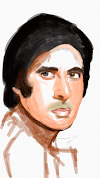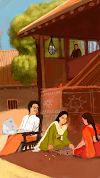Life in the 1200s vs. 2024: A Comprehensive Exploration
Communication
In the 1200s, communication was predominantly verbal, with face-to-face interactions being the norm. Written communication existed but was largely limited to the educated elite, such as clergy and nobles. Town criers and messengers played crucial roles in disseminating news, often shouting announcements in public squares. The advent of the printing press in the late 15th century marked the beginning of more widespread literacy.
Transportation
Travel during the 1200s was largely by foot or on horseback. Roads were often rough and unpaved, making long journeys challenging. Wealthier individuals had access to carriages, but for the majority, animals like horses and donkeys were the primary means of transport. This limited the distances people could travel, fostering close-knit communities.
In contrast, modern transportation in 2024 is characterized by a plethora of options, including cars, buses, trains, and airplanes. This has led to urban sprawl and a significant increase in the pace of life, allowing individuals to commute long distances for work or leisure.
Daily Life and Habits
The daily lives of people in the 1200s revolved around agriculture. Most were engaged in farming, with their activities dictated by the seasons. Food preservation methods, such as salting and smoking, were vital for surviving harsh winters. Daily routines often included rising at dawn, working the fields, and attending to household chores. Social interactions typically occurred during communal events or market days.
In modern life, daily routines vary widely based on lifestyle, occupation, and personal choices. Many people start their day with a morning commute to work, engage in digital communication throughout the day, and participate in various social activities in the evenings. The concept of work-life balance has gained importance, with individuals seeking to carve out time for family, hobbies, and personal interests.
Family Life
In the 1200s, family units were often large, with extended families living together. Family roles were clearly defined; men were typically responsible for providing for the family, while women managed the household and children. Marriages were often arranged, focusing on alliances and social status rather than romantic love.
Today, family structures are more diverse, encompassing nuclear families, single-parent households, and blended families. The importance of emotional connections and mutual support within families has become more pronounced, with parenting styles evolving to emphasize communication and emotional well-being.
Education
Education in the 1200s was primarily reserved for the wealthy, often conducted in monasteries or through private tutors. The curriculum focused on religion, philosophy, and classical texts, with little emphasis on practical skills.
In 2024, education is accessible to a broad population, with various levels of schooling available, from preschool to university. The digital age has also transformed education, introducing online learning and a wealth of resources that allow individuals to learn at their own pace and according to their interests.
Markets and Trade
Markets in the 1200s were vital for local economies, where farmers and artisans gathered to sell their goods. Bartering was common, and trade routes began to emerge, connecting different regions and facilitating the exchange of goods like spices, textiles, and metals.
In 2024, markets have expanded globally, with online shopping and international trade dominating the landscape. Modern consumers have access to a wide variety of products from around the world, and e-commerce platforms have revolutionized the way people shop, emphasizing convenience and choice.
Cultural Practices
Religion was central to daily life in the 1200s, influencing social norms and community activities. Festivals and religious observances marked the calendar year, providing opportunities for communal celebration and reflection. Entertainment consisted of folk tales, music, and local festivals, with traveling minstrels bringing stories from afar.
Today, cultural practices have diversified immensely. While religion remains important for many, the rise of secularism has led to a variety of belief systems coexisting. Entertainment is now global, with movies, music, and art available at our fingertips, reflecting diverse cultures and ideologies.
Conclusion
The contrasts between life in the 1200s and modern 2024 are profound, highlighting the evolution of communication, transportation, daily habits, family life, education, and markets. By understanding these differences, we can appreciate the advancements that have shaped our current civilization and consider how we can continue to evolve for a better future.













0 Comments